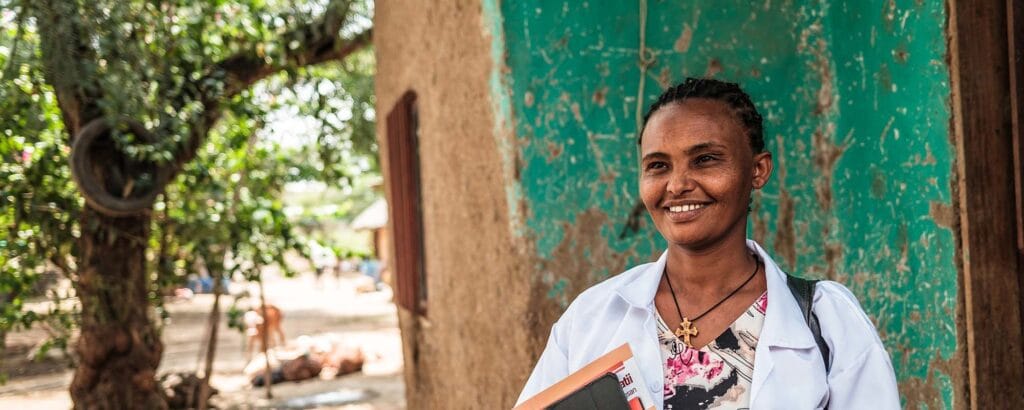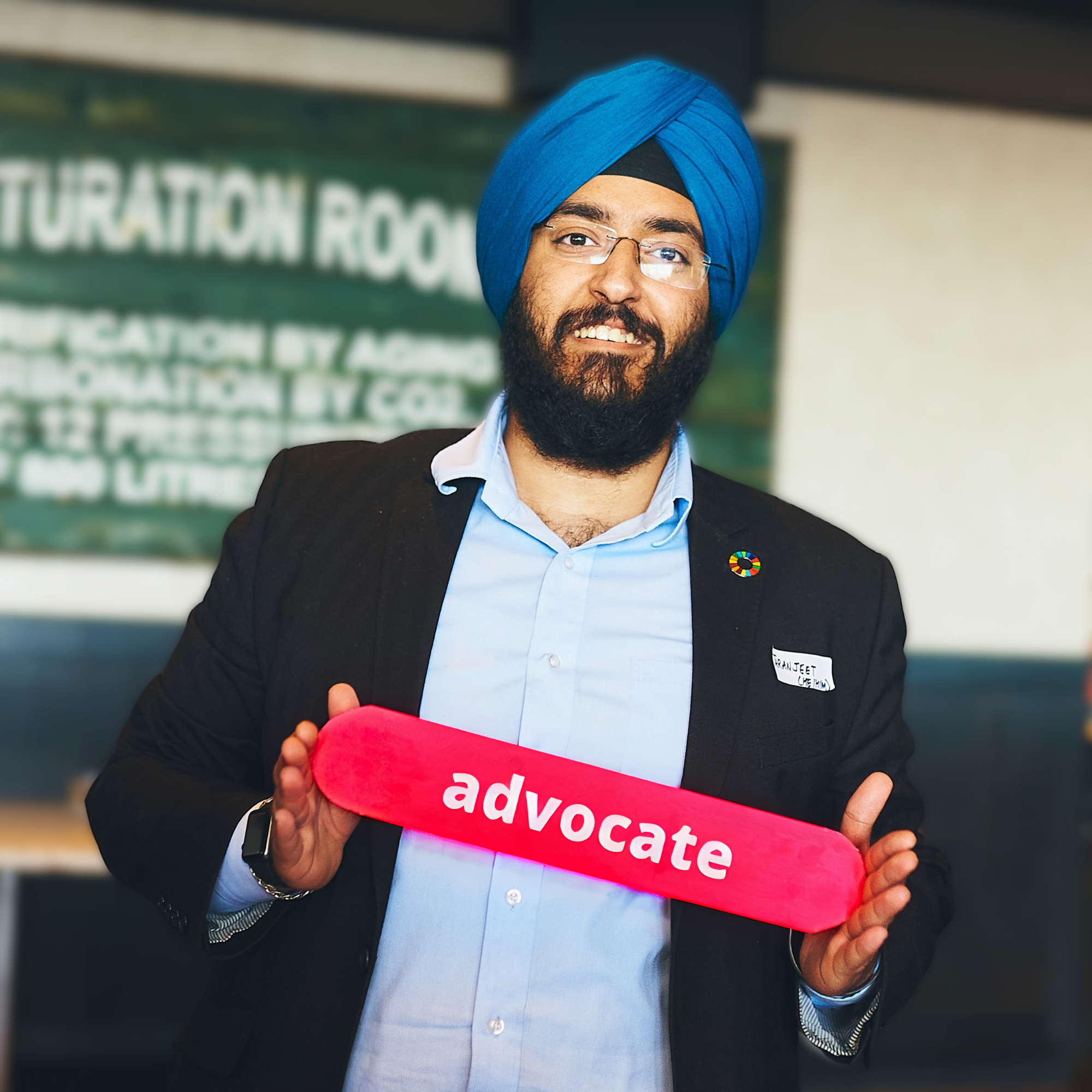“My government will not cut foreign aid (...) Our vision is that this is a time for Canada to lead in ensuring that we play a role that Canada always has, which is to be generous and to be effective in our support of those who are most vulnerable around the world.”
- Mark Carney, Prime Minister of Canada
For every $100 that Canada spends on all other issues, only 34 cents is spent on international assistance. This may seem small here, but it can mean everything elsewhere: access to life-saving medicines or vaccines, a nutritious meal, or shelter after a disaster. That small investment helps mothers protect their children, creates economic opportunities and provides a lifeline during humanitarian emergencies. Any cuts to this investment will have devastating consequences for millions.
And it’s not just about others – it's about all of us. The pandemic showed that diseases don’t stop at borders. Today, tuberculosis (TB) is rising here in Canada, with increased cases across the country in 2025. By supporting efforts like the Global Fund to Fight AIDS, Tuberculosis and Malaria, we confront these threats head-on and strengthen health systems, because protecting every community is essential to keeping us all safe.
Furthermore, as famine looms and malnutrition escalates, our international assistance helps ensure children have access to the food and care they need to survive and grow. These are smart, compassionate investments. They reflect the kind of country we want to be: one that keeps our word, one that shows up, and helps build a healthier and more hopeful future for all. As Budget 2025 approaches, we have a chance to protect this impact. Because even a little can change everything.
The ask: Protect the International Assistance Envelope at CAD $10.6 billion in 2025–26 to maintain Canada’s leadership in global health, nutrition, and development and allow us to:
- help #WinTheFight against AIDS, tuberculosis, and malaria by building on our current level of strong support ($1.21 billion over 3 years) to the Global Fund.
- invest in nutrition, one of the most cost-effective ways to save women and children’s lives.
Picture being a parent in Northern Nigeria, where soaring food prices, insecurity, and disrupted services make daily life a struggle. Your child is frail, their body wasting from severe acute malnutrition. You know there is a treatment: a simple, ready-to-use therapeutic food (RUTF) that can help them recover.
But when you rush to the clinic, you’re told it’s out of stock. Not because science has failed, but because the world has fallen short on its promises, and recent funding cuts have stripped essential treatments from the children who need them most.
This is the reality facing millions of families right now. In Nigeria alone, 3.5 million children under five are at risk of dying in the coming months if emergency food supplies run out.
That is why Canada’s recent decision to become a donor to the Child Nutrition Fund is so critical. This innovative financing mechanism helps ensure that RUTF and other lifesaving nutrition services reach the communities that need them most. For parents, Canadian support, especially at a time when global solidarity is faltering, can mean the difference between holding a child lost to hunger or watching them recover and thrive.
Our modest international assistance budget makes this possible with only 34 cents out of every $100 Canada spends on all other issues.
The challenges we face are urgent. Diseases like AIDS, TB, and malaria still kill 2.4 million people every year, while nearly 720 million people face hunger and over 1 billion women and children suffer from malnutrition.
Meanwhile, wealthy nations are retreating. The G7, which provides about three-quarters of all global development funding, is projected to slash support by nearly a third by 2026. If these cuts go through, it will be the steepest drop since 1960.
Canada stands apart as one of the few G7 countries which haven’t announced cuts to international assistance so far. In fact, Prime Minister Mark Carney pledged during the election that he would not scale back foreign aid. However, he recently directed the government to make significant funding cuts across departments in upcoming budgets and international assistance could be on the chopping block. Now, at a time when others are pulling back, Canada has a critical opportunity – and responsibility – to lead the way and reaffirm its global commitments.
Investing in development is not a trade-off with domestic priorities. It directly supports Canada’s own prosperity and security. Strong health systems abroad help prevent the next pandemic from reaching our borders, while access to nutritious food abroad creates stronger, more stable economies which in turn become trading partners for tomorrow.
By funding international assistance effectively, Canada protects lives, strengthens communities, and ensures that our investments abroad deliver lasting benefits at home.
While Canada invests only a very small amount of its wealth – less than 1% (0.36%) – in the fight to end global poverty, these contributions build momentum and leverage billions of dollars of investments from global partners. It is through our robust and growing International Assistance Envelope – the budget line from where the vast majority of Canada’s international assistance is drawn – that Canada steps us as a global leader and influences others to invest.
Canada has a proud, non-partisan legacy of making an impact around the world, particularly in the lives of women and children. Across governments, Canadians have supported health, education, immunization, and nutrition. These are not partisan choices, they are Canadian values. While Canada alone cannot fill the void left by other donor countries, it can help prevent backsliding by doubling down on investments in global health and nutrition. As the current G7 president, this would send a strong message that Canada continues to uphold our commitments and is prepared to lead by example.
Budget 2025 is our chance to continue that legacy. By safeguarding international assistance, investing in the Global Fund, and scaling up the fight against malnutrition, Canada can lead when the world needs us most.
Cuts to international assistance have wide-ranging and devastating consequences.
The ask: Protect the International Assistance Envelope at CAD $10.6 billion in 2025–26 to maintain Canada’s leadership in global health, nutrition, and development and allow us to:
- help #WinTheFight against AIDS, tuberculosis, and malaria by building on our current level of strong support ($1.21 billion over 3 years) to the Global Fund.
- invest in nutrition, one of the most cost-effective ways to save women and children’s lives.
latest campaign news
Nutrition
#BudgetForLeadership:
story

Twenty years ago, many families in Ethiopia had little access to basic health care, and preventable diseases like HIV, TB, and malaria claimed countless lives.
Today, thanks to more than 40,000 health extension workers, backed by national leadership and support from the Global Fund, communities across the country have access to lifesaving care, showing how bold investments can transform a health system in a generation.
Some health extension workers, like Fanose, have been serving their communities since the very beginning of the program and can speak firsthand to the remarkable progress they’ve helped achieve.
Read the full story on the Global Fund's website.
video
On the campaign trail, now-Prime Minister Mark Carney made a promise: “My government will not cut foreign aid.”
October 2: Results Canada's Action Kick-Off
October 11: International Day of the Girl Child
October 16: World Food Day
October 17: International Day for the Eradication of Poverty
Budget
Global Fund
Nutrition
Cuts
ODA
Replenishment
#BudgetForLeadership
#WinTheFight
#YesWeCanEndTB
#cdnpoli
